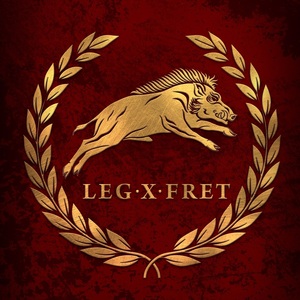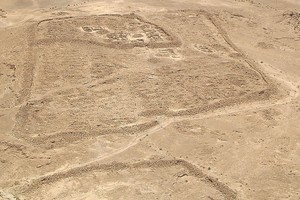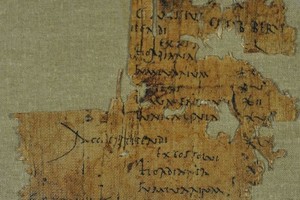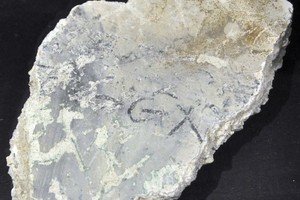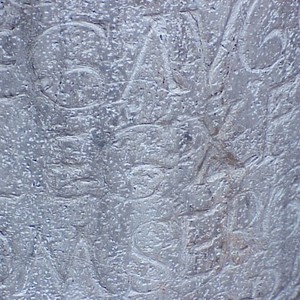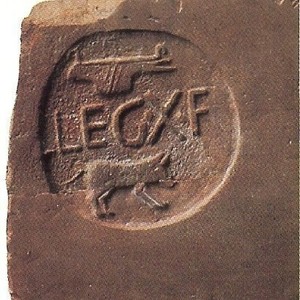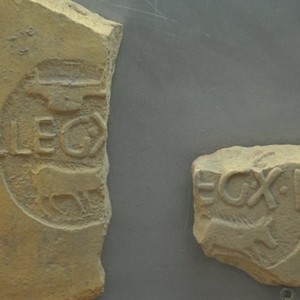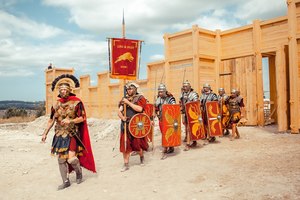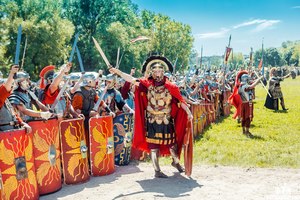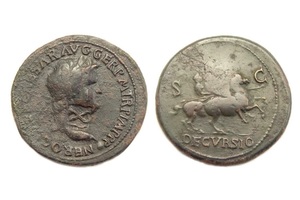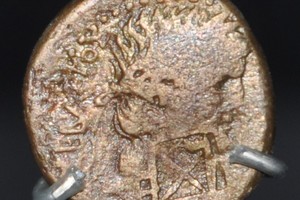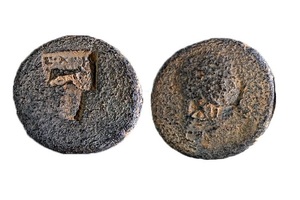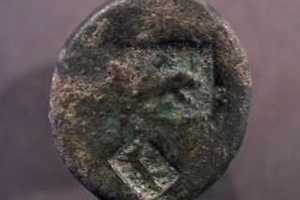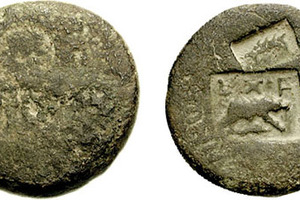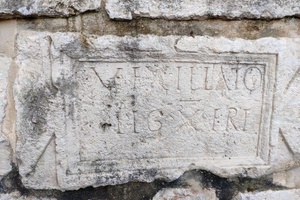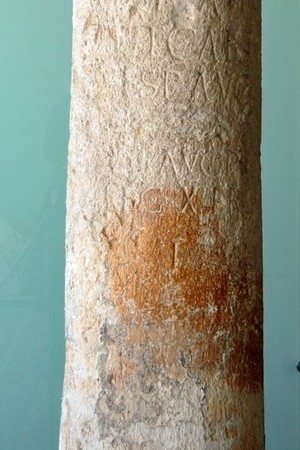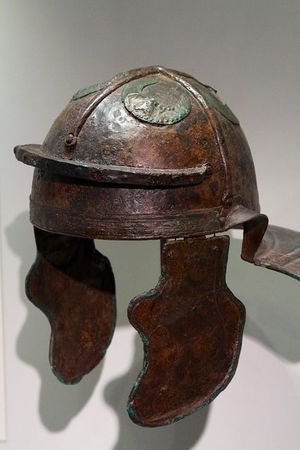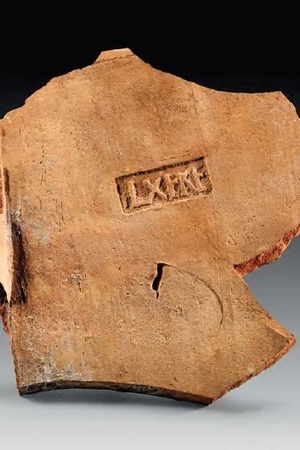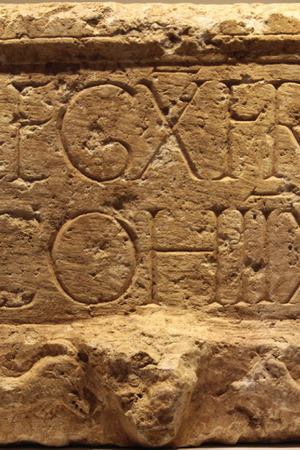Roman Legion - Legio X Fretensis
Legio X Fretensis (Tenth Legion of the Straits)— was a Roman legion formed by Octavian Augustus in 41 or 40 BCE for the war against Gnaeus Pompeius Magnus' younger son, Sextus Pompeius, who controlled the island of Sicily and was one of the leaders of the Pompeians.
Dates of existence: Created in 41/40 BCE. The last mentions of the legion date back to 410 CE.
Symbols of the legion: Bull, warship, boar, Neptune, dolphin.
Titles: Antoniniana Pia Fidelis
The name "Fretensis" can be translated as "Crushing in the Strait," "Guarding the Strait," "Legion from the Strait," or simply "Strait Legion." According to Mommsen, this cognomen is due to the fact that the legion was originally created to guard the Strait of Messina between Sicily and Italy (Latin: Fretum Siculum). Despite the name, the legion was not a naval unit.
Battle Path
- In 36 BCE, the Battle of Naulochus took place near the cape in Italy. In this battle, Agrippa defeated Sextus Pompeius, and the legion received its name "Fretensis" for its participation.
- In 31 BCE, Legio X Fretensis took part in the famous naval battle between the forces of Octavian and Antony at the Battle of Actium. Shortly after this battle, the legion was transferred to Syria. From there, the legion was sent to suppress the Jewish rebellion in Judea that occurred after the death of King Herod the Great in 4 CE.
- In 6 CE, the legion was transferred to Cyrrhus (modern-day Turkey). Later, it was again transferred to Syria and, during the reign of Emperor Nero, was sent to participate in the Armenian campaign led by Gnaeus Corbulo from 58 to 63 CE. Corbulo was a Roman general who, by order of Emperor Nero, undertook to solve the Eastern question, particularly the conquest of Armenia and its transformation into a Roman province. Several legions, including Legio X Fretensis, participated in Corbulo's campaign on Armenia (the Roman-Parthian War of 58-63 CE). The soldiers of Legio X Fretensis managed to capture parts of Armenia, including the cities of Artaxata and Tigranocerta.
- During the reign of Emperor Nero (54-68), the legion participated in the Armenian campaign of Gnaeus Domitius Corbulo. Corbulo was a Roman general who, on the orders of Emperor Nero, set about solving the Eastern question, in particular, the conquest of Armenia and turning it into a Roman province. Several legions, including the Legio X Fretensis, participated in Corbulo's campaign against Armenia (Roman-Parthian War of 58-63). The legionnaires of Legio X Fretensis managed to capture part of Armenia, including the two capitals of Armenia – the cities of Artashtat and Tigranakert.
- After the Armenian campaign, Legio X Fretensis was returned to Syria. In this region, the legion took part in the suppression of the rebellion in Jerusalem in 66 CE (the First Jewish-Roman War). The rebellion was not successfully quelled, and the soldiers of the Tenth Legion were defeated. The remnants were joined with the main parts of the legion stationed in Ptolemais (modern-day Acre, Israel).
- Having recovered after the defeat in Judea near Jerusalem in 66 CE, the legion again participated in suppressing the first Jewish rebellion.
- During the First Jewish-Roman War (66-71 CE), the legion was commanded by Marcus Ulpius Trajan, the father of the future Roman Emperor Trajan and Titus Flavius Vespasianus, later known as Emperor Titus. In 68 CE, Legio X Fretensis, after capturing the important Jewish city of Gamala, was transferred to Scythopolis (modern-day Beit She'an, located in the Jordan Valley, approximately 25 km from the Sea of Galilee, Israel). Here, the legion operated in the Jordan River Valley, where they destroyed the monastery of Qumran.
- In 70 CE, when Titus, the son of Emperor Vespasian, became the commander of the legion, it took part in the siege and assault of Jerusalem. After the capture of Jerusalem, the legion began the siege of the last formidable stronghold held by the Jewish rebels—Masada. It took the legion three years (71-73 CE) to capture Masada, and today, the fragments of Roman siege camps that still surround Masada serve as a reminder of this feat. The defeat near Jerusalem at the beginning of the Jewish rebellion was forgiven to the Tenth Legion.
- Josephus Flavius, a Jewish military leader during the First Jewish-Roman War, was captured by the Romans and later served them. He wrote a detailed work on the First Jewish-Roman War called "The Jewish War."
- According to the book by Josephus Flavius, Elazar ben Yair, the leader of the defenders of Masada, delivered a passionate speech to the Jews, urging them to die as free men rather than endure painful and shameful slavery. The excerpt from Elazar ben Yair's speech, delivered on the night of the fall of Masada, is as follows (Josephus Flavius, The Jewish War, VII, 320-336):
"Take courage, heroes, and cover yourselves with glory! We have long resolved to no longer be servants to the Romans or to any other masters except to God alone, who is the true and just Lord of mankind. The time has now come to carry out our oath. Let us not be disgraced in this hour, for we have always held our souls contemptible when it comes to bondage, and have preferred to die as free men as we were born. Let us not leave our freeborn children to be the spoils of the enemy, nor let our wives be enslaved and subjected to the insult of the victors. While we still have our swords, let us use them in the most gallant way, for it is still in our power to die nobly and as free men. We were the first to revolt, and we are the last to fight against them. And I cannot but esteem it as a favor that God has granted us, that it is still in our power to die bravely and in a state of freedom, which has not been the case with our brethren, who, unexpectedly captured, were then slain. But let us make a brave use of what is in our hands and nobly perish, embracing life beforehand and making an attempt upon our enemies. Let our wives die before they are abused, and our children before they have tasted of slavery; and after we have slain them, let us bestow that glorious benefit upon one another mutually and preserve ourselves in freedom, as an excellent funeral monument for us. But first let us destroy our money and the fortress by fire; for I am well assured that this will be a great grief to the Romans, that they shall not be able to seize upon our bodies, and shall fail in their hopes of finding a great deal of wealth upon our dead bodies, and that no one will be able to insult us even in our death."
In his account, Josephus Flavius also references the story of two women who, with their five children, took refuge in a cave and informed the Romans about how the men had killed their own wives and children by drawing lots.
"…they made the first onset upon themselves, and killed their wives and children, and then cast lots for one another, and every man killed his friend. And when there were no more men left who would execute their dying wives and children, nor any more women who wanted anything to keep them alive, first the fire obliged those that were within to come out; but when none of them did so, but they received every one of them a sword thrust in their throats, the Romans came then in and put an end to the slaughter. The number of the slain, including the women and children, was about nine hundred and sixty." (VII, 9, 1).
The last of the 960 besieged Jews set fire to the fortress and took his own life. Lucius Flavius Silva Nonius Bassus served as the legion's legate during the siege of Masada. Even today, from the heights of the Masada walls, one can see the remnants of the Roman military camps built by the soldiers of Legio X Fretensis.
- After the fall of Masada, Legio X Fretensis was stationed in Jerusalem for nearly 150 years, serving as a permanent camp. Evidence of its presence in Jerusalem during this period includes the discovery of the Tenth Legion baths near the bridge leading to the old city of Jerusalem, remnants of tiles with legion stamps, and a column mentioning the legion's name located in Jerusalem. The legion was under the authority of the procurator of Judea at this time.
- In the 2nd century, during the reign of Emperor Trajan, the legion participated in the Parthian campaign (115-117 AD) led by Emperor Trajan. During this campaign, Emperor Trajan initially captured all of Mesopotamia but was later forced to withdraw and retreat to Syria.
- Legio X Fretensis continued its service in Syria and, under the reign of the next emperor, Emperor Hadrian, participated in the suppression of the Second Jewish Revolt known as the Bar Kokhba Revolt (131-135 AD). The legion took part in the siege and destruction of the last stronghold of the rebels, the fortified city of Betar, located in the Judean Hills southwest of Jerusalem.
- After the fall of Betar, the legion, along with Legio VI Ferrata, was stationed in a joint camp in the region of Galilee. The next mention of the legion relates to the time of the Roman emperor Marcus Aurelius.
- During the reign of Marcus Aurelius, the legion participated in the Marcomannic Wars in Dacia. These wars were fought by Rome against the alliances of Sarmatian and Germanic tribes from 166 to 180 AD due to their incursions into the eastern provinces of the Roman Empire. Various episodes of the Marcomannic Wars are depicted on the reliefs of the column of Marcus Aurelius in Rome. Afterward, the legion continued its service in Syria.
- During the Year of the Five Emperors (193 AD), Legio X Fretensis supported one of the contenders for the imperial throne in Rome, Pescennius Niger, who declared himself emperor but was defeated by the forces of another contender, Septimius Severus. The victorious Severus allowed the legion to continue its service in Judea.
- In the early 3rd century, the cavalry attached to the legion participated in the war in Gaul, where it earned the title Pia Fidelis ("Faithful and Loyal"). The legion had previously received the title Antoniniana, but the reasons and circumstances for this are unknown.
- In the early 3rd century, Legio X Fretensis was still stationed in Jerusalem, but later it was transferred to Aila (near the southern city of Eilat, Israel), where it was involved in guarding the important trade and transport route from Eilat to Jerusalem.
- In the early 5th century (410 AD), the legion was still located in Aila (a city on the northern coast of the Gulf of Aqaba in the Red Sea, belonging to Jordan, near the Israeli city of Eilat).
- There are no further records of the legion after this period.
It is interesting that there is a version according to which Legio X Fretensis is the legendary Tenth Legion of Caesar. This version is refuted by the well-known Australian writer Stephen Dando-Collins in his book "Legions of Rome: The Definitive History of Every Imperial Roman Legion." The German historian of the 19th century, Theodor Mommsen, holds the opposite view.
Reenaction
Our club, Legio X Fretensis, is engaged in the reenaction of this Roman Imperial military unit, which is why it is named as such, although its activities have long gone beyond mere reconstruction of the Tenth Legion. The main time period for which the Tenth Legion is reconstructed is the 1st and 2nd centuries AD.
However, there are other clubs for the reconstruction of this division around the world, one of them is located in Malta.
Related topics
List of Roman Legions, Legion, Legionnaire, Octavian Augustus, Legio VI Ferrata, Legio X Gemina, Legio IX Hispana, Legio XI Claudia
Literature
1. Theodor Mommsen. "History of the Roman Emperors".
2. I. Golyzhenkov- "The Army of Imperial Rome: 1st-2nd Centuries AD.".
3. A. Makhlayuk, "Roman Legions: The Most Complete Illustrated Encyclopedia (3rd revised and expanded edition)."
4. A.G. Grushevoy, "Jews and Judaism in the History of the Roman Republic and Roman Empire."
5. Stephen Dando-Collins, "Legions of Rome: The Definitive History of Every Imperial Roman Legion."
6. Josephus Flavius, "The Jewish War."
8. E. Dombrova, "Legio X Fretensis: Prosopographic Study of its Officers (1st-3rd centuries AD) (1993)."
9. E. Dombrova, "Legio X Fretensis," in: Yann Le Bohec, "The Roman Legion and the Upper Empire" (2000 Lyon) 317-325.
10. H. Geva, "The Camp of the Tenth Legion in Jerusalem: An Archaeological Reassessment," in Israel Exploration Journal 34 (1984) 239-254.
11. M. Gichon, "The Siege of Masada," in: Yann Le Bohec, Les légions de Rome sous le Haut-Empire (2000 Lyon) 541-554.
12. Y. Meshorer, "Two Finds from the Roman Tenth Legion," in: Israel Museum Journal 3 (1984), 41-45.

 Gallery
Gallery






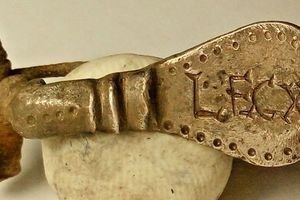 Fibula of the Tenth Legion. Silver. Private collection. Length-31mm, width-11mm, weight 5g. Late 1st century BC
Fibula of the Tenth Legion. Silver. Private collection. Length-31mm, width-11mm, weight 5g. Late 1st century BC